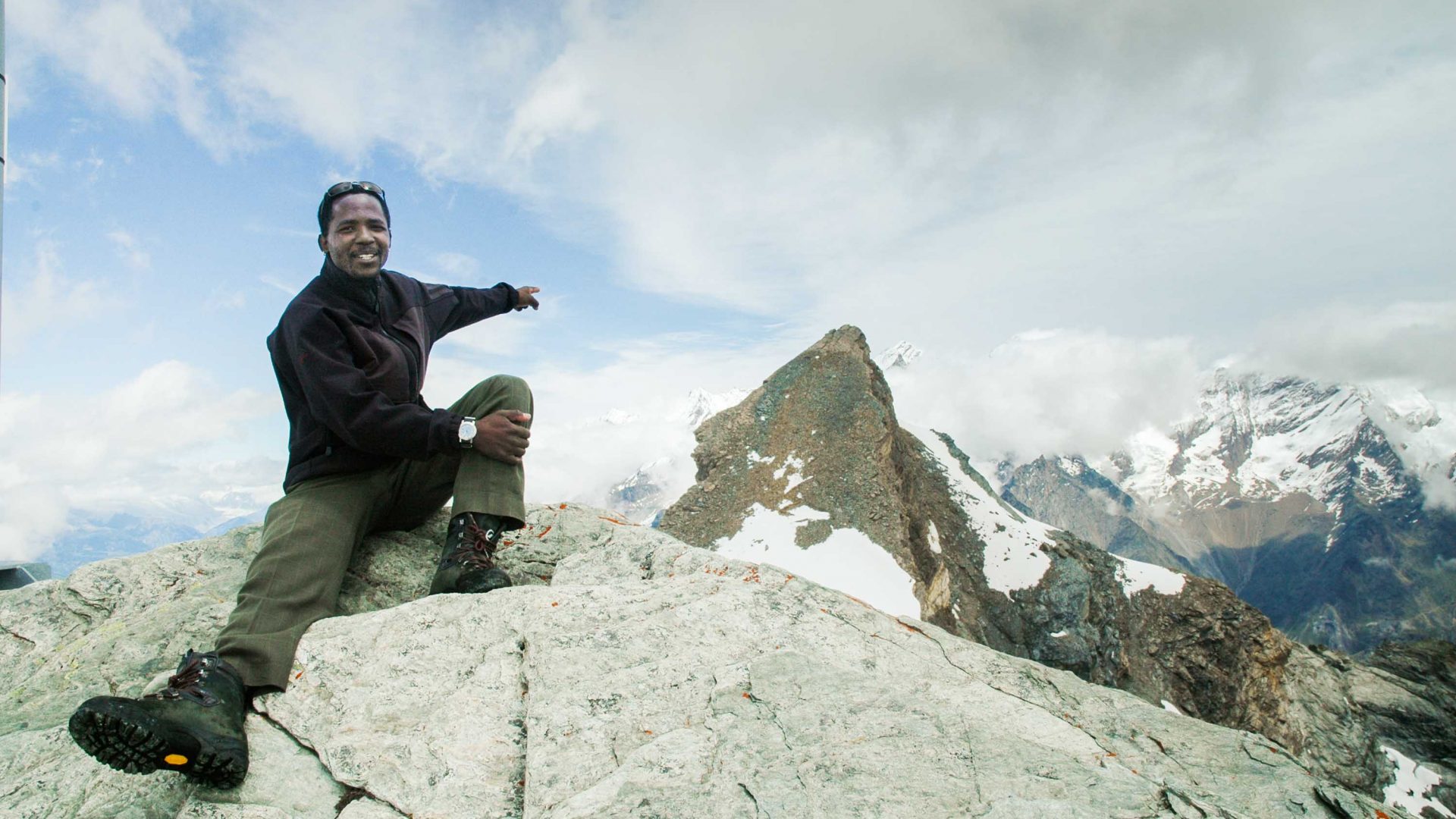
He’s climbed Everest and set records, and Sibusiso Vilane has learned a few life lessons along the way. Now, the legendary African adventurer is sharing those lessons with Adventure.com


He’s climbed Everest and set records, and Sibusiso Vilane has learned a few life lessons along the way. Now, the legendary African adventurer is sharing those lessons with Adventure.com
On 26 May 2003, Sibusiso Vilane became the first Black African to stand on the summit of Chomolungma, also called Mount Everest. Upon his return from the Himalayas, he was awarded the Order of Ikhamanga and shook Nelson Mandela’s hand.
Since that historic climb, he’s ticked off the Seven Summits, become the first Black person to complete the “Grand Slam” challenge, including climbing Mount Everest, plus reaching the North and South poles. Now, at 51, he runs 90-kilometer ultra-marathons for fun.
We sat down with Sibusiso to chat about climbing, ambition, failure and the lessons he’s learned after 25 years spent exploring wild—and high—places.
When I speak to kids and they say, “I want to do what you’ve done,” I tell them you need good friends and a good network (adventuring is sadly a very expensive game). But you also need luck. I’ve been very lucky that I met people who believed in me and supported my climbing career. I grew up in two countries. I was born in a very rural part of South Africa, in Mpumalanga province near the southern part of Kruger National Park, a place called Shongwe Mission.
But my mother moved us to Swaziland when I was four; it was much more relaxed than South Africa during apartheid. She was a single mum with no qualifications. We didn’t have a home. We didn’t have food to eat. But she was a visionary who believed in education. Luckily, she met my step-dad, and he could afford to send us to primary school. In a way, it was a blessing, I knew I had to work very hard if I was going to change my life.
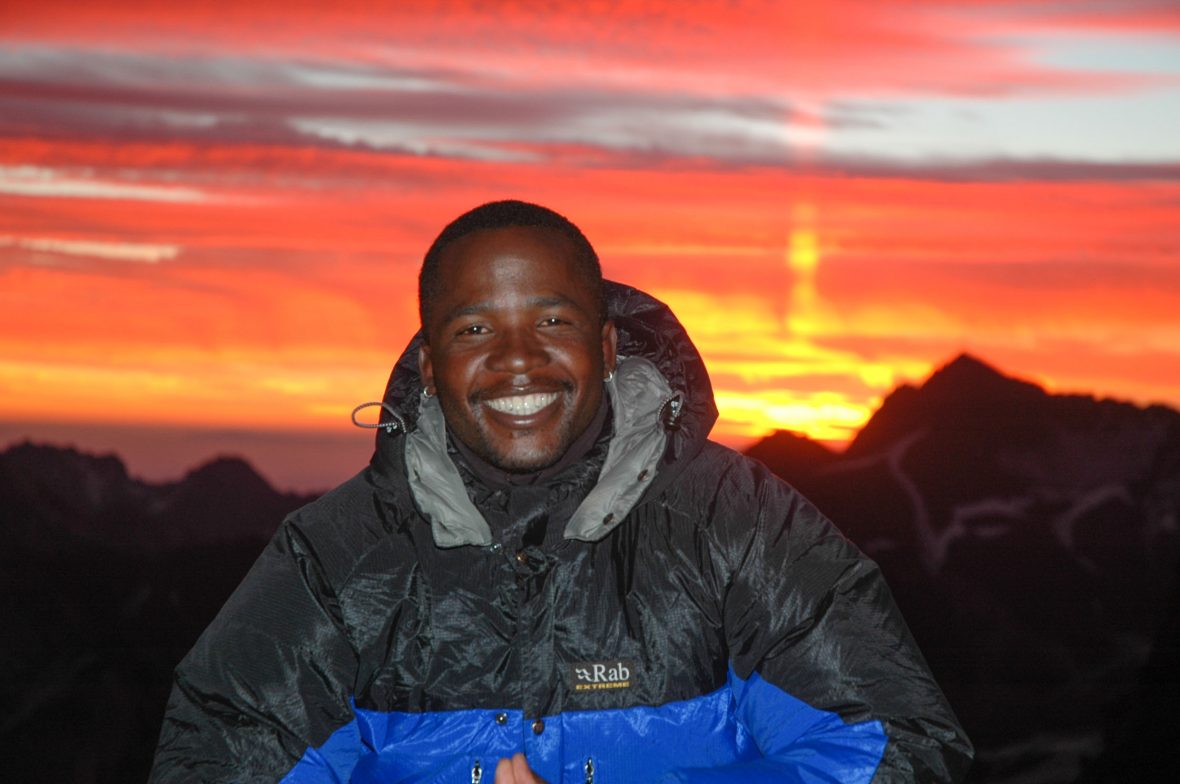
Years later, I was 26 years old, working as a tourist officer in Malolotja Nature Reserve. One morning, I was up early, and a traveler walked through the gate. He turned out to be John Doble, the British High Commissioner for Swaziland. I volunteered to guide him on a day hike. We walked beautifully for six hours—crossing streams and scrambling over boulders.
RELATED: Meet Erin Parisi, the trans athlete on a mission to climb all Seven Summits
Eventually, I guided John up a waterfall. When we reached the top, he turned to me and said, “It’s amazing how you climb with such ease and agility. You don’t show any fear.” I didn’t know it then, but that was when my mountaineering life began. John would become my dear friend, and he helped raise the money for my first Everest expedition. One chance encounter changed my entire life.
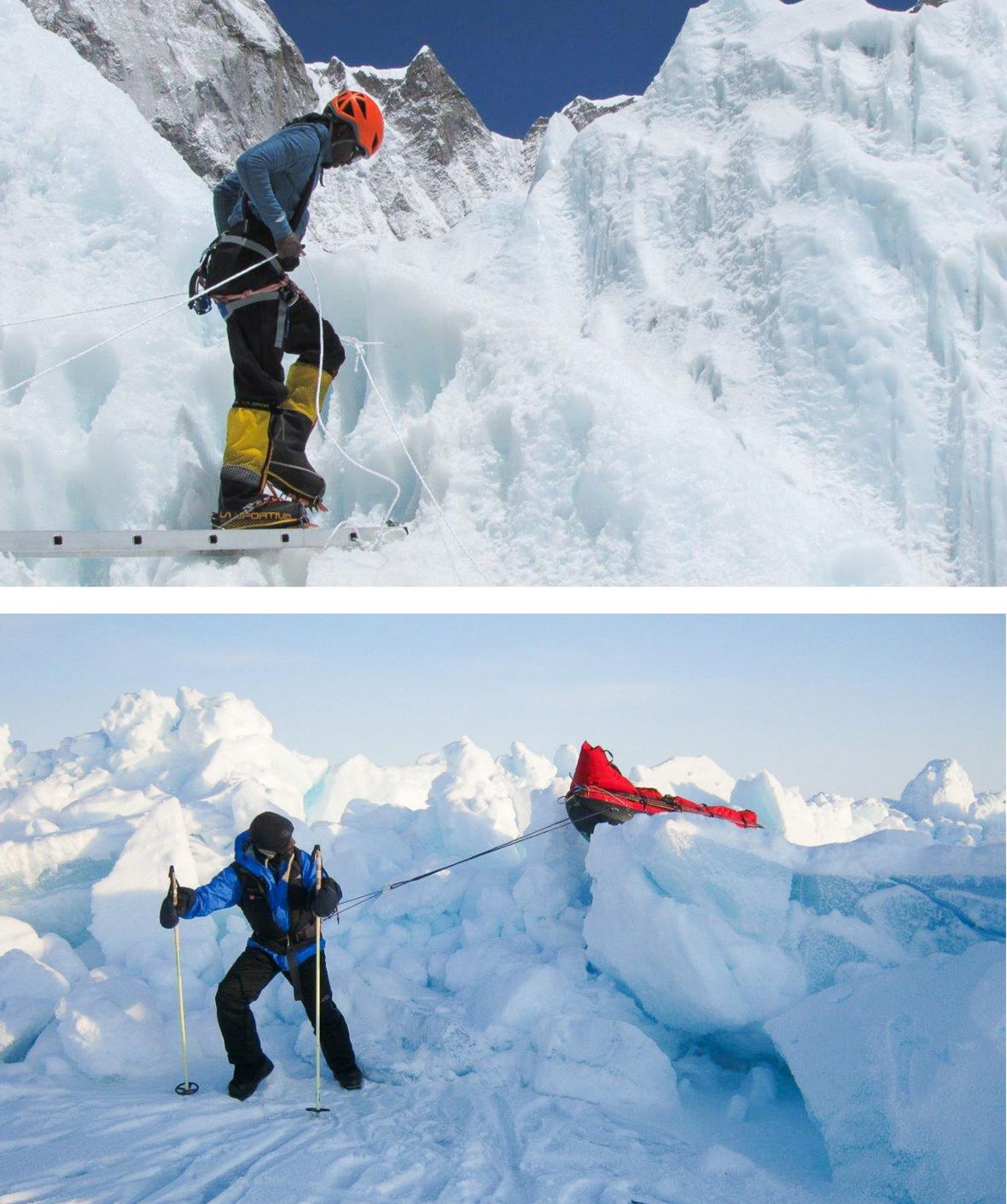
When I first stood on Mount Everest, I couldn’t control myself. I wept. It was the first time I’d been far away from home. I’d left my wife and three young children to stand on the highest peak in the world, and I’d just achieved it in one go. My ambition was complete. When I walked back down the mountain, I thought, okay, this is the start of your normal human life. There’s no need to climb anything else. But when I got back to Base Camp, a journalist handed me a satellite phone and suddenly I was speaking to the whole nation. The host asked me, “What’s next?” I realized there was no “normal” life for me—not anymore.
It took me six months to process that climb. When I got home I was invited to meet Nelson Mandela, and he told the media, “What Sibusiso has done has made us all proud, but more than that, it means that Africa is here. Africa is capable. He has set the standard for young people to follow.” That’s when I felt a new ambition. I came home and said to myself, “You can’t just climb one mountain and stop. You have to keep going.”
Whatever you’re suffering right now, you hate it, it’s cold, you’re hurting; but at some point, if you just endure, it will pass.
Failure is part of mountaineering. I remember I was on an expedition to Denali, the last of my Seven Summits. On our ascent, I felt very strong, our group looked great, and the weather was perfect on summit day. But our expedition leader had penciled in a rest day, so I had to sit and watch maybe 40 other climbers head up the mountain and come back in the afternoon, having reached the summit.
That night we went to sleep, and when I woke up, my little tent was shaking. A blizzard had blown in and we were stuck in that camp for seven days, running out of time and food. I was heartbroken. We’d failed. But at the same time, what helped me get over that failure was sitting down and thinking about it logically. Did I give up, or were there circumstances outside my control? Once I understood that I did everything I could, I accepted the failure and moved on. Feel bad, by all means. Feel terrible. But try to reconcile your failures.
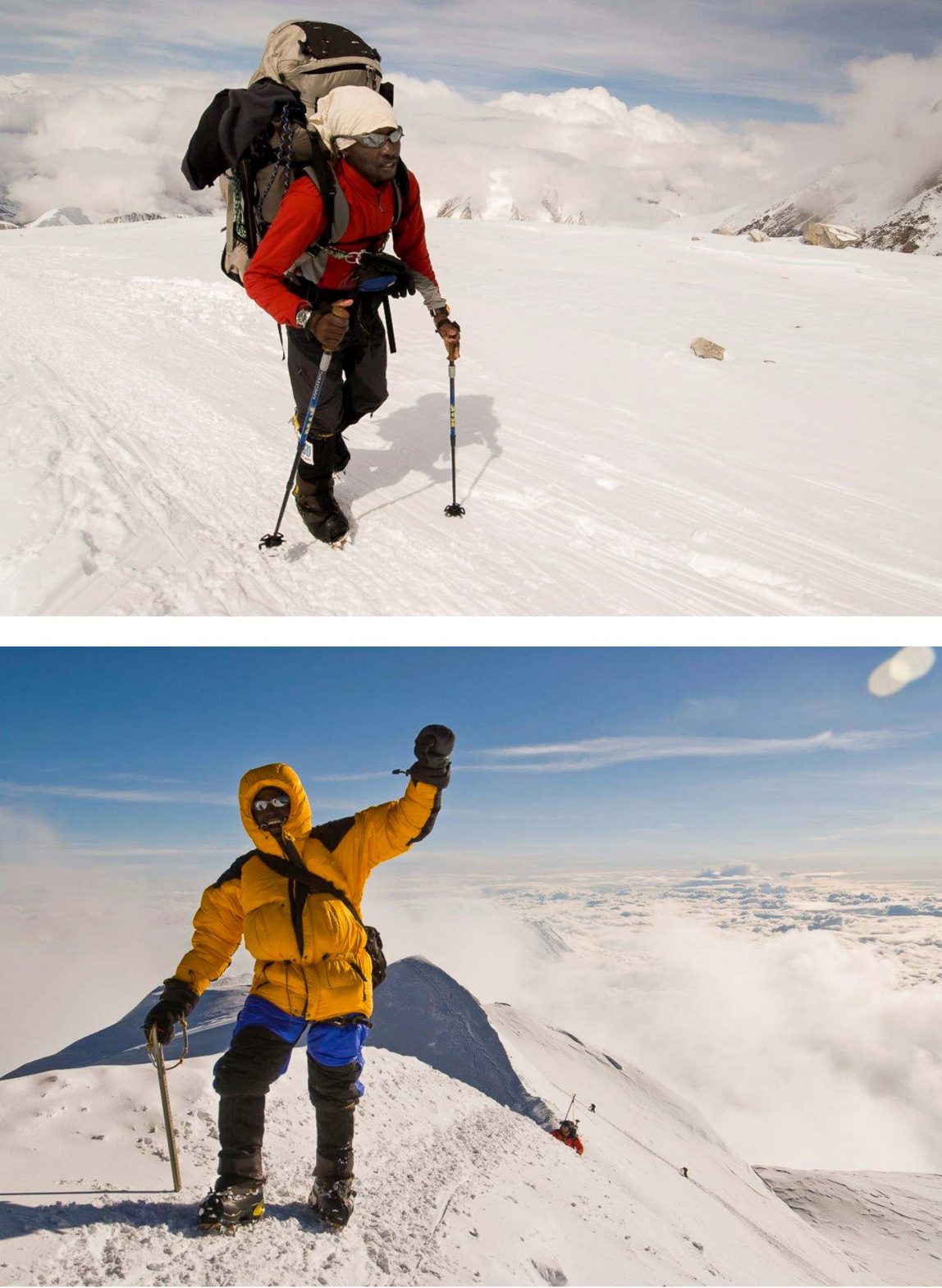
Pain is always with you on the mountains. I’ve suffered cramps where I couldn’t even lift my foot. The first time I climbed Everest, the temperature was around -36 degrees Celsius (-36 Fahrenheit). I couldn’t feel my toes. The wind was vicious. Everything was getting heavy. As I was slogging along the South Ridge, I would take 10 steps, then stop. My mind was saying, “it’s only another 100 meters, why can’t you walk 100 meters?” And my body was saying, “No, I can’t do it.”
RELATED: Is the climate crisis endangering the world’s biggest ice park?
When I’m in agony like that, at the back of my mind, I say to myself, “Yes I’m suffering, but this will pass.” The pain doesn’t last. And I think I carry that with me wherever I go. I live with it every day. It’s why I like to run ultra-marathons. Whatever you’re suffering right now, you hate it, it’s cold, you’re hurting; but at some point, if you just endure, it will pass.

The other day I thought to myself: Chances are you’ve lived more than half your lifetime. That’s the reality. I’ve always believed you can’t waste a minute, not even a second, of your life. You need to be doing things that have meaning and purpose for you. But at the same time, part of aging gracefully is acknowledging that there will come a point when things slow down. I’m 51 now. I’d love to be back in the Himalayas—I’m still interested in a few 8000-meter peaks there—but maybe some of them will have to remain as dreams. That’s the reality of getting older.
Still, it’s all relative. I was climbing with John on his 70th birthday. We climbed Mont Blanc together. And he turned to me and said, “It must be quite nice, being 50. You’ll have to come back and climb this when you’re my age.” He’s laid down the challenge for me! I might not climb all the mountains in my lifetime. But why stop now?
****
You can read more of Sibusiso’s story in his book, To The Top From Nowhere. Follow his adventures at sibusisovilane.co.za

James Shackell is a freelance journalist with words in The Huffington Post, Red Bull, Canadian Traveler and Smith Journal. One day, he'll be bumped to business class, and you'll never hear the end of it.


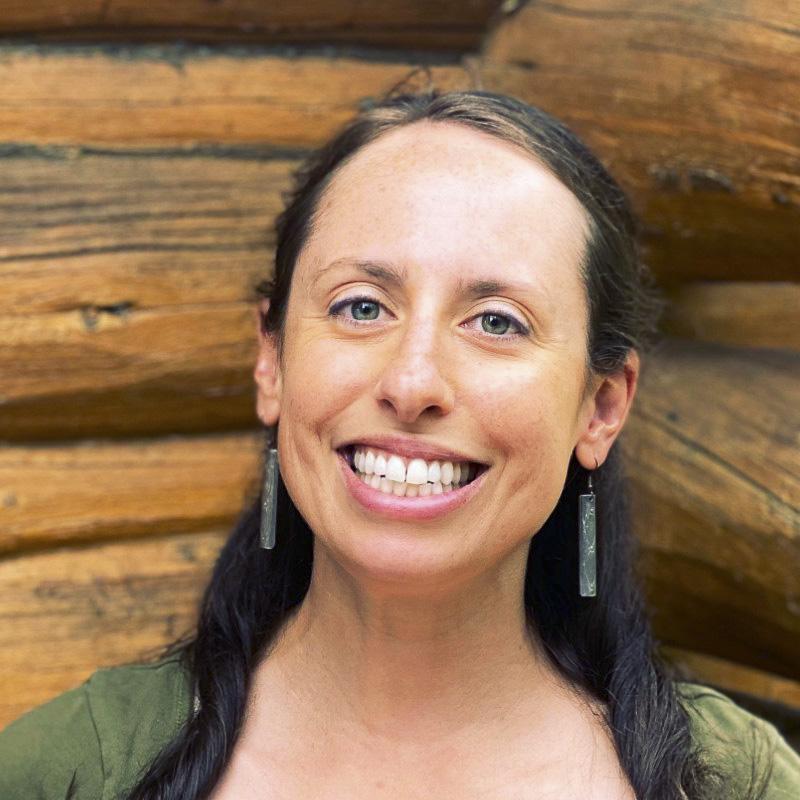





Can't find what you're looking for? Try using these tags: